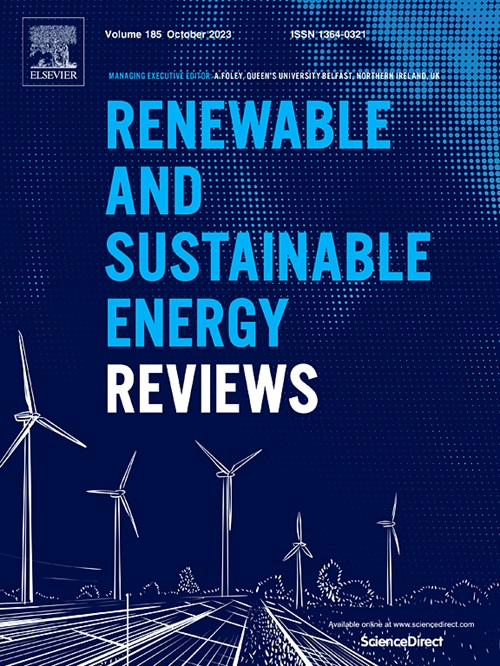Battery management system for zinc-based flow batteries: A review
IF 16.3
1区 工程技术
Q1 ENERGY & FUELS
引用次数: 0
Abstract
Zinc-based flow batteries are considered to be ones of the most promising technologies for medium-scale and large-scale energy storage. In order to ensure the safe, efficient, and cost-effective battery operation, and suppress issues such as zinc dendrites, a battery management system is indispensable. While numerous literature reviews have addressed battery management systems, the majority focus on lithium-ion batteries, leaving a gap in the battery management system for zinc-based flow batteries. This study aims to bridge this gap by providing a comprehensive review of the current status in quo and development trends of the battery management system for zinc-based flow batteries. This research begins by introducing the various types of zinc-based flow batteries based on the pH value of the negative electrolyte and elucidating the mechanisms of zinc dendrite formation and side reaction. Additionally, an appropriate model is crucial for achieving accurate and efficient battery state estimation, this study provides an overview of battery models, encompassing equivalent circuit models, electrochemical models, and phase field models. Furthermore, this study delineates the nine essential functions of the battery management system in detail. These functions play a crucial role in achieving operando monitoring and management of the battery. Finally, some challenges and outlooks for future research are presented to serve as references for the continued advancement of the battery management system tailored specifically for zinc-based flow batteries.

锌基液流电池电池管理系统综述
锌基液流电池被认为是最具发展前景的中、大规模储能技术之一。为了保证电池安全、高效、高性价比的运行,抑制锌枝晶等问题,电池管理系统必不可少。虽然有大量的文献综述讨论了电池管理系统,但大多数都集中在锂离子电池上,在锌基液流电池的电池管理系统上留下了空白。本研究旨在通过对锌基液流电池电池管理系统的现状和发展趋势进行全面综述,弥补这一空白。本研究首先根据负极电解质的pH值介绍了各种类型的锌基液流电池,并阐明了锌枝晶的形成和副反应的机理。此外,适当的模型对于实现准确有效的电池状态估计至关重要,本研究概述了电池模型,包括等效电路模型,电化学模型和相场模型。在此基础上,详细阐述了电池管理系统的九项基本功能。这些功能对实现电池的运行监测和管理起着至关重要的作用。最后,提出了未来研究的挑战和展望,为锌基液流电池专用电池管理系统的不断发展提供参考。
本文章由计算机程序翻译,如有差异,请以英文原文为准。
求助全文
约1分钟内获得全文
求助全文
来源期刊

Renewable and Sustainable Energy Reviews
工程技术-能源与燃料
CiteScore
31.20
自引率
5.70%
发文量
1055
审稿时长
62 days
期刊介绍:
The mission of Renewable and Sustainable Energy Reviews is to disseminate the most compelling and pertinent critical insights in renewable and sustainable energy, fostering collaboration among the research community, private sector, and policy and decision makers. The journal aims to exchange challenges, solutions, innovative concepts, and technologies, contributing to sustainable development, the transition to a low-carbon future, and the attainment of emissions targets outlined by the United Nations Framework Convention on Climate Change.
Renewable and Sustainable Energy Reviews publishes a diverse range of content, including review papers, original research, case studies, and analyses of new technologies, all featuring a substantial review component such as critique, comparison, or analysis. Introducing a distinctive paper type, Expert Insights, the journal presents commissioned mini-reviews authored by field leaders, addressing topics of significant interest. Case studies undergo consideration only if they showcase the work's applicability to other regions or contribute valuable insights to the broader field of renewable and sustainable energy. Notably, a bibliographic or literature review lacking critical analysis is deemed unsuitable for publication.
 求助内容:
求助内容: 应助结果提醒方式:
应助结果提醒方式:


